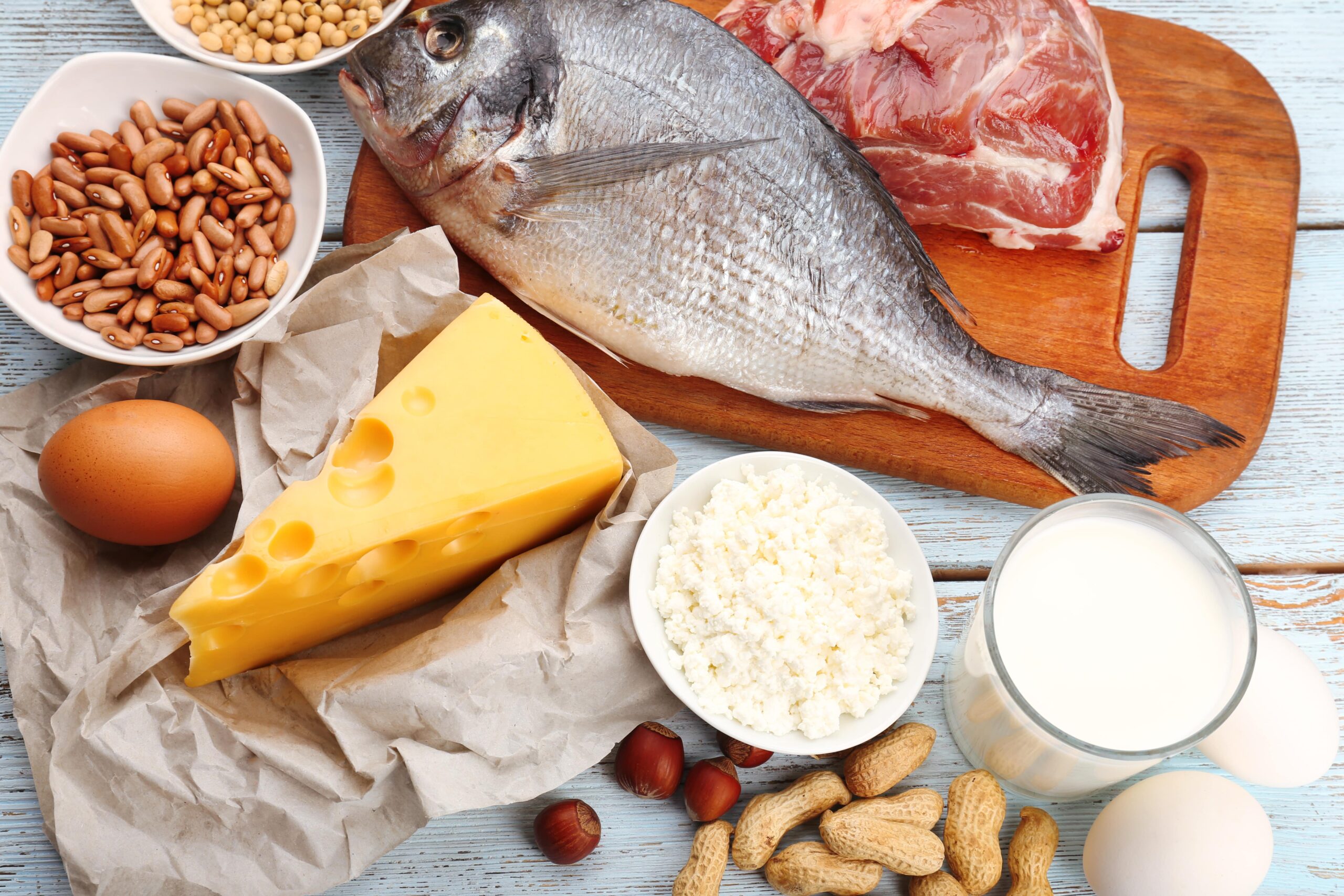-
Here are the key takeaways I would share with you as a friend:
- It is very rare for illness from a food borne illness to cause miscarriage.
- However, during pregnancy, the body’s immune functions shift, causing you to be more susceptible to illnesses from foods and it is not just you that is at risk, it is the child you are carrying, too!
- It is important to be aware of a few specific foods you may want to avoid during pregnancy. . I also recommend you do your own research and work with your doctor. That is why I have coordinated these articles with the nitty-gritty details and links to research so you can make an informed decision on what works best for you… read on for more! And don’t miss my Next Steps section at the bottom.
High-mercury seafood
Undercooked, raw, or contaminated seafood
Unpasteurized Cider or Juice
Raw milk, raw soft cheeses, and any other raw dairy products
Raw or undercooked eggs
Premade seafood or meat salad (such as tuna salads or deli chicken)
Undercooked poultry and meat
If you’ve had miscarriages and are concerned about your current pregnancy, even eating could make you nervous. While miscarriage due to food is rare, many foods can affect your health and the health of your baby during pregnancy.
During pregnancy, some aspects of immune functions become weaker to accommodate the growing baby, so your risk of certain infections are higher. The fetus may also be more sensitive to food contaminants such as heavy metals than adults.
Consider avoiding the following foods during TTC and pregnancy as studies show that they may disrupt embryonic or fetal development. Many of these present high risk for food-borne illnesses that can cause miscarriage even though most adults can safely consume them.
High-mercury seafood
Seafood is a rich source of omega-3 fatty acids and proteins, along with selenium, iodine, and other minerals. These are essential nutrients for embryonic and fetal development.
The omega-3 fatty acids in fish and seafood provide building blocks for the eyes and the brain. However, high levels of mercury are present in some shellfish and fish that can disrupt the development of the nervous system 12345.
The Food and Drug Administration (FDA) suggests avoiding the following if you’re pregnant or trying to conceive, since they have high mercury levels.
- King mackerel
- Bigeye tuna
- Marlin
- Swordfish
- Tilefish
- Shark
- Orange roughy
However, not all seafood needs to be avoided. Some seafood has low mercury so the benefits outweigh the risk. According to the 2015-2020 Dietary Guidelines for Americans, you can eat eight to 12 ounces of seafood per week during pregnancy. The latter amounts to two to three servings of seafood per week 67.
The following fish are safe for pregnancy (when cooked):
- Cod
- Catfish
- Anchovies
- Salmon
- Trout
- Tilapia
- Shrimp
- Shad
- Sardines
- Pollock
- Pacific oyster
- Scallops
- Herring
- Salmon
Undercooked, raw, or contaminated seafood
During pregnancy, changes in your immune system can put you and your baby at an increased risk for foodborne illnesses. These illnesses may result in early pregnancy loss, premature delivery, or stillbirth. Certain foodborne illnesses, including Toxoplasma gondii and Listeria, may infect your fetus even if you don’t feel sick. The following are FDA advisory about eating seafood during pregnancy. 89:
Cook your seafood thoroughly: Cook all your seafood dishes to 145o F (62.7ºC). Bacteria or parasites such as Listeria may be present in raw seafood that may make you ill during pregnancy and harm your baby. So, you may try to avoid:
- Sashimi and sushi
- Raw Oysters
- Ceviche
- Raw Clams and Scallops
Be careful with smoked seafood: Smoked refrigerated seafood presents a significant risk of Listeria. Avoid eating smoked refrigerated seafood unless cooked to reach an internal temperature of 165o F (73.8ºC), which is high enough to kill harmful food-borne pathogens.
Smoked refrigerated seafood such as trout, salmon, cod, whitefish, mackerel, or tuna often comes with the following names:
- Nova-style
- Kippered
- Lox
- Jerky
- Smoked
You can consume smoked seafood during pregnancy if it is shelf-stable, canned, or present in a cooked dish, such as in a casserole.
Unpasteurized Cider or Juice
Unpasteurized cider and juice (even freshly squeezed ones) can result in foodborne illnesses due to Escherichia coli (E. coli) and other food-borne pathogens. To prevent such infections, only drink pasteurized juice or cider during pregnancy 10.
.
Raw milk, raw soft cheeses, and any other raw dairy products
Raw Milk is unpasteurized milk and may contain harmful bacteria, including Campylobacter, Listeria, E. coli, Salmonella, or Mycobacterium tuberculosis. It is better to use pasteurized milk and dairy products, such as cheese, to prevent foodborne illnesses from these bacteria.
Avoid consuming the following unpasteurized soft cheeses unless prepared with pasteurized milk. Most dairy products in the US are pasteurized, so you may only find the unpasteurized ones in specialty cheese stores. However, remember to check the label and ensure that they’re pasteurized when you purchase these products.
Raw or undercooked eggs
Undercooked or uncooked eggs can contain Salmonella. Cook your eggs thoroughly until the whites and yolks become firm to kill the bacteria. If you are preparing a dish with eggs, make sure to cook it to a temperature of at least 160o F (71.1ºC). Avoid eating foods in which raw eggs may be present, including 11:
- Raw batter and dough
- Homemade eggnog
- Homemade Mayonnaise and other egg-based salad dressing
- Tiramisu
- Homemade ice cream
- Eggs Benedict
- Homemade or freshly made hollandaise sauce
Premade seafood or meat salad (such as tuna salads or deli chicken)
You may want to avoid premade chicken salad, seafood salad, or ham salad as they are at a higher risk of Listeria and other food-borne pathogen contamination 1213.
Raw sprouts
Undercooked or raw sprouts such as clover, alfalfa, radish, and mung bean may contain Salmonella or E. coli. Cook your sprouts thoroughly before eating 14.
Undercooked poultry and meat
It is better to cook all poultry and meat thoroughly before eating. Use a food thermometer to make sure the internal temperature of the meat is a safe minimum 15.
.
| Food | Type | Internal Temperature (°F) |
| Beef, bison, veal, goat, and lamb | Steaks, roasts, chops | 145 (62.7Cº)Rest time: 3 minutes |
| Ground meat and sausage | 160 (71.1Cº) | |
| Casseroles | Meat and meatless | 165 (73.8Cº) |
| Chicken, turkey, and other poultry | All: whole bird, breasts, legs, thighs, wings, ground poultry, giblets, sausage, and stuffing inside poultry | 165 (73.8Cº) |
| Eggs | Raw eggs | Cook until yolk and white are firm |
| Egg dishes (such as frittata, quiche) | 160 (71.1Cº) | |
| Ham | Raw ham | 145 (62.7º), then rest 3 minutes |
| Precooked ham (to reheat) | 165 (73.8Cº)Note: Reheat cooked hams packaged in USDA-inspected plants to 140°F | |
| Leftovers | Any type | 165 (73.8Cº) |
| Pork | Steaks, roasts, chops | 145 (62.7Cº), then rest 3 minutes |
| Ground meat and sausage | 160 (71.1Cº) | |
| Rabbit and venison | Wild or farm-raised | 160 (71.1Cº) |
| Seafood | Fish (whole or filet), such as salmon, tuna, tilapia, pollock, bass, cod, catfish, trout, etc. | 145 (62.7Cº) or until flesh is no longer translucent and separates easily with a fork |
| Shrimp, lobster, crab, and scallops | Cook until flesh is pearly or white and opaque | |
| Clams, oysters, mussels | Cook until shells open |
It is essential to heat the meat to the recommended minimum internal temperatures as poultry and meat may contain Salmonella, E. coli, Toxoplasma gondii, or Campylobacter. These pathogens die when food is cooked to the right internal temperature.
The Centers for Disease Control and Prevention advises the following preventive measures to decrease the risk of getting toxoplasmosis from consuming meat 17:
- Always cook meat to the minimum internal temperature as per USDA recommendations.
- Wash counters, dishes, utensils, sink, and cutting boards with soapy, hot water after they touch raw poultry, meat, or seafood.
- Wash your hands with water and soap.
Of course, I also recommend you do your own research! That is why I have coordinated these articles with the nitty-gritty details and links to research so you can best decide what works best for you, read on for more! And don’t miss my Action Steps at the bottom of the article!
Next Steps to Consider
- If you are trying to conceive or pregnant, be aware of specific foods to avoid to decrease your risk of foodborne illness.
- If you are worried about something you have eaten, please consult with your doctor.
- If you think your miscarriage may have been caused by a food borne illness, please consult with your doctor.
- Download ourfree lab checklist for testing to consider if you are experiencing recurrent miscarriages.
References




0 Comments